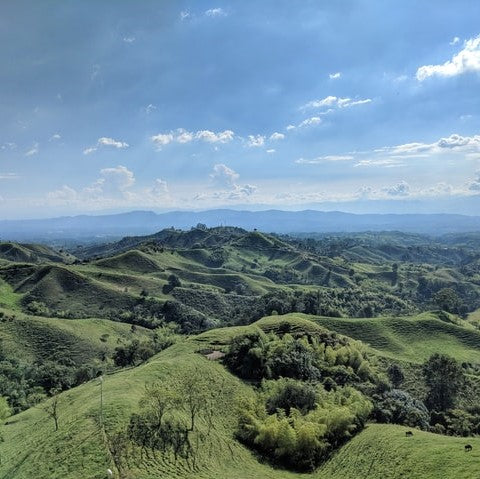
Altitude & Coffee: Why it Matters?
Share

When the roaster tells you the exact altitude at which your coffee was grown… Does it matter?
The higher up we go, the more forgiving the climate is. Temperature goes down and moisture in the air is higher. But how, or why, does this mean better coffee?
It all comes down to the ideal climate in which the coffee plant grows. The coffee plant, Coffea arabica, is quite delicate. It does not tolerate extreme temperatures, requires a lot of moisture… In short, elevated areas meet all the ideal criteria for growing coffee.
Altitude equals quality?
While some brands claim high elevations give them the edge over other brands, this should be taken with a grain of salt. High elevations does give you a few bonus points when growing.
Let's take a look at what high altitude means for coffee:
- Better drainage
- Plenty of moisture
- Cool temperatures
- Rich soil, preferably volcanic
Therefore, it should not be surprising that most of the world's most famous coffee comes from regions where the geography is very diverse - the more mountainous the terrain, the better.
A good example of this is South America. A lot of coffee comes from this region; the best usually is grown near the Andes. The Andes are the largest mountain range in the whole world. It is a series of mountains that span over 7000 km across the continent, being a part of several different countries. The average height in these parts is 4000 M, although not many people live that far up the mountains.
Flavor and altitude: How different altitudes make for different flavor?
One small detail we left out before is that cooler climates result in the coffee cherries ripening more slowly than they usually would. This gives a lot of time for the seed to soak in the flavors and aroma in the fruit. Here’s a short guide to the different flavor profiles of coffee grown at different altitudes:

- 1000 M: Very little to no acidity. The coffee is rather plain, bitterness being the principal taste in the coffee.
- 1500 M: Low acidity and a well-rounded flavor. Subtle in many ways: It’s neither bad nor is it particularly good coffee.
- 2000 M: Medium acidity. The aromas start taking some protagonists here, and the flavor is more and more complex.
- 2500 M: Complex, sophisticated flavors. Medium to high acidity. You can sense spice and floral-like flavors in the coffee. Specialty coffee is grown at this altitude or higher.
Of course, this doesn’t mean that only those coffees that have been grown at high altitudes are good. Neither does it mean that the higher the altitude, the better the coffee: After 1500 M, it is very much a question of skill and not only of altitude.
Next time you’re buying coffee, check to see if they mention elevation. If not, simply search around to see where the coffee was grown - that is usually a big giveaway depending on the area.
